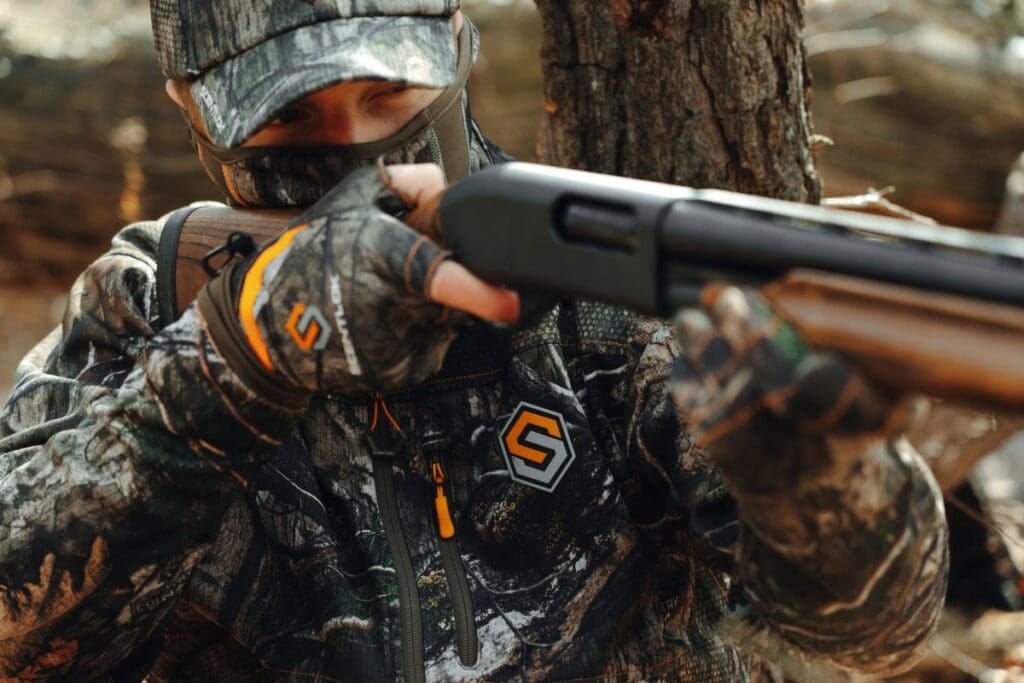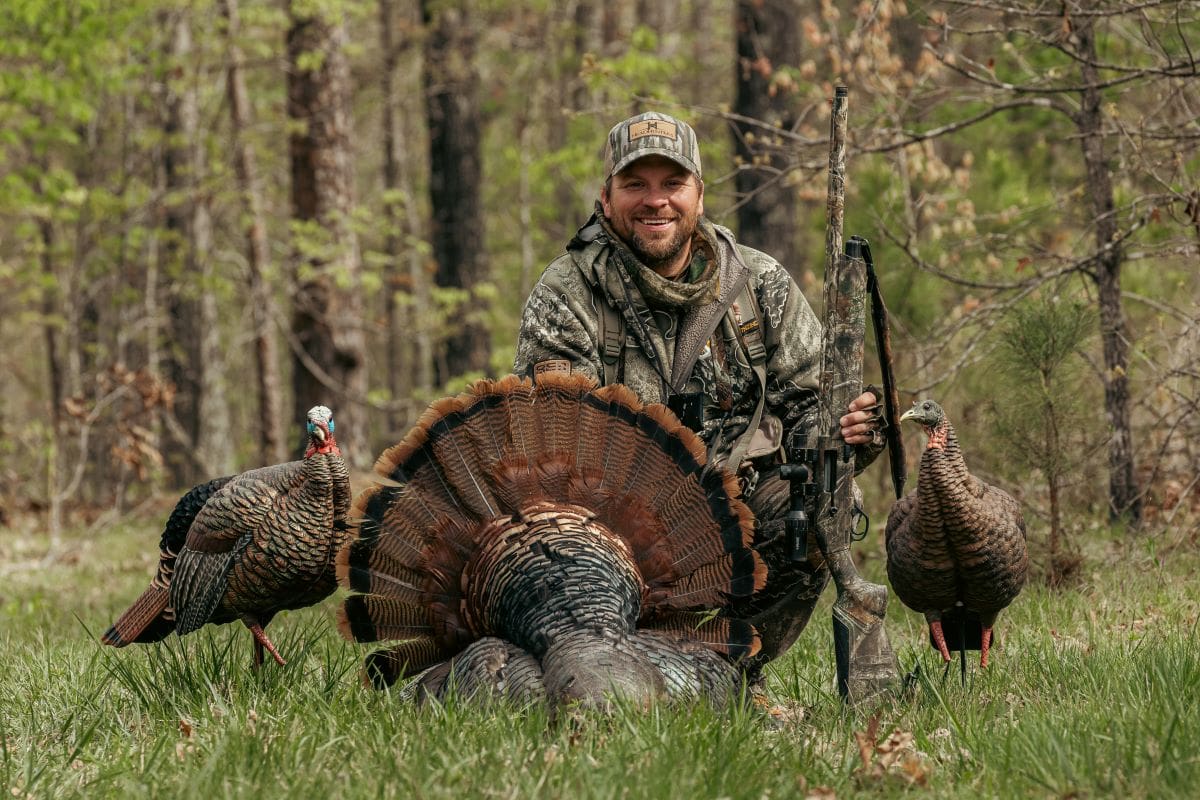Turkey hunting is one of the world’s most thrilling and rewarding activities, but achieving success often relies on the right shotgun setup. Every detail matters, from choosing the ideal firearm to adjusting chokes and ammunition.
As some southern states have started their seasons, the rest of the country anxiously anticipates their own opening. During this wait, one of the most crucial tasks for hunters is getting their shotguns prepared for real hunting situations. ScentLok and HeadHunters TV pro Randy Birdsong is gearing up for another season of traveling the country while turkey hunting. A key element to Randy’s enduring success in the spring woods is his pre-season routine of ensuring his shotgun setup functions flawlessly before entering the woods. “The first step to finding a shotgun setup is to find one that fits you well and shoots correctly,” explains Birdsong.
Choosing the Right Shotgun
Whether you’re an experienced turkey hunter or just starting, Birdsong sat down with us to guide hunters in choosing and customizing a shotgun for maximum effectiveness in the field. “One of the biggest mistakes hunters can make is shooting a gun that is too long or too short. It’s hard to shoot a shotgun well if it doesn’t fit you.”
Several key factors should influence your decision when selecting a shotgun for turkey hunting. Randy notes that with today’s ammunition, such as TSS loads and various advancements, hunters can manage with much less power than in previous years. He recalled that over ten years ago, turkey hunters were enthusiastic about using 3 ½” loads, and everyone thought you couldn’t kill a turkey without a hard-kicking load like the 3 ½” shells. “Last year, we were using TSS loads from our Beretta 20 gauges, and I killed a gobbler, stone dead at 62 yards.” Valid evidence that it is becoming easier for hunters to use lighter loads. Yet, Birdsong still recommends trying different loads to see what works best for you.
- Gauge: The 12-gauge remains the most popular choice due to its versatility, ammunition availability, and capacity for handling heavier loads. However, the 20-gauge, which Birdsong notes is now his go-to gauge for turkey hunting, has gained popularity. Even the .410 has seen a rise in use, particularly with the emergence of tungsten shot, which enhances lethality in a lighter, more manageable firearm.
- Action Type: Pump-action and semi-automatic shotguns are preferred for turkey hunting. Pump-action shotguns are reliable and affordable, while semi-autos reduce recoil and offer faster follow-up shots.
- Weight & Maneuverability: A lighter shotgun is easier to carry over long distances, but too light a firearm can increase felt recoil. Finding a balance is key.
Best Barrel Length for Turkey Hunting
A barrel length between 24 and 26 inches is ideal for turkey hunting. A shorter barrel makes the shotgun easier to maneuver in dense woods or blinds while maintaining good accuracy and pattern density. Longer barrels (28 inches and up) can increase velocity slightly but may be cumbersome in tight spaces.
Optics and Sights for Turkey Hunting
Equipping a turkey shotgun with an optic or upgraded sight is crucial for accurate shot placement. Birdsong notes that using a scope is more “user-friendly.” Elaborating, “Some hunters love a scope because it allows them to lower their stance on the shotgun, enhancing their point of aim, while others prefer a reflex sight as it helps them maintain a wider view with both eyes open.” Randy shared that he favors a turkey scope because it provides more precise adjustments compared to a bead or open sight, and using a scope also allows for better accuracy at greater distances when shooting heavier loads like TSS. Some excellent options include:
- Red Dot Sights: Enhance aiming precision and allow for quick target acquisition.
- Fiber Optic Sights: Bright and visible in low-light conditions.
- Magnified Scopes: Less common but valuable for hunters who prefer pinpoint accuracy at longer distances.
Chokes & Ammunition
Choosing the right choke tube can help your choice of ammo reach its full potential. Birdsong notes that it can be easy for hunters to go overboard when using choke tubes. He explains that using too tight of a choke tube with today’s ammunition can result in too tight of a pattern. He prefers a straight full or lighter extra full choke, which isn’t overly constricted. “When a choke is too constricted, and you get a bird closer than twenty yards, it’s easy to miss when your pattern is the size of a softball at closer distances.”
A full or extra-full turkey choke is best for maximizing pattern density and extending effective range. These chokes constrict the shot pattern, ensuring a tight spread at longer distances.
Ammunition: Lead, Tungsten, or Bismuth?
Randy says they choose to use a TSS load because you can get by with a smaller size shot because of less density of the shot, which means you have twice as many pellets in the air as compared to older shot types. “The shot that I have found to work the best for myself is a 3” #8 shot because, for me, it is a happy medium between shooting #7,8 and 9’s.”
The type of ammunition you choose significantly affects shot pattern and overall performance:
- Lead: Traditional and effective, but patterns may not be as tight as modern alternatives.
- Tungsten: Denser than lead, allowing for smaller shot sizes that retain more energy and penetration at longer distances. Ideal for 20-gauge hunters.
- Bismuth: A solid, non-toxic alternative that performs well but doesn’t match tungsten’s density.
Patterning Your Shotgun for Maximum Effectiveness
Patterning your shotgun ensures a clean, ethical kill. Birdsong recommends starting at a closer distance to determine where your shot pattern lands, then moving back farther. “If you start off at long distances, it’s harder to be precise about where your true pattern is hitting the target,” says Randy.
- Set Up a Target: Use a turkey head target at 30-40 yards.
- Shoot Different Loads and Chokes: Test various ammo brands and chokes to find the best combination.
- Check for Even Coverage: You want at least 100 pellets in a 10-inch circle at your effective hunting range.
- Adjust as Needed: Adjust your optic or switch loads if your pattern is inconsistent or off-center.
Accessories & Comfort
To optimize your turkey hunting setup, consider these must-have accessories:
- Sling: Makes carrying your shotgun easier on long hunts.
- Shell Holder: Keeps extra rounds easily accessible.
- Recoil Pad: Helps reduce felt recoil, especially for 12-gauge shooters.
- Camo Wrap or Finish: Helps conceal your shotgun in the field.

Hunting Strategies & Real-World Application
Biggest Mistakes Hunters Make with Their Shotgun Setup
Birdsong noted that one of the biggest mistakes he has observed turkey hunters make when setting up their shotgun is simply grabbing a gun and skipping the patterning step. Every gun brand, along with different ammo sizes and types of chokes, will shoot differently. It is essential to pattern your gun before hunting.
- Failing to Pattern Their Shotgun: Not testing different chokes and loads can lead to poor shot placement.
- Using the Wrong Choke/Ammunition Combo: Some hunters use a choke that is too tight with larger shot sizes, leading to uneven patterns.
- Neglecting to Sight In: Even if you’re using a bead sight, ensuring your shotgun shoots where you aim is imperative.
- Open Fields: Use tighter chokes and heavier loads to extend your effective range.
How Often Should You Check Your Shotgun Setup?
When traveling several miles to hunt, Birdsong suggests that, especially for hunters using scopes or electronic sights, it’s wise to shoot your gun a few times upon arriving at camp or your hunting grounds. This confirms that everything functions properly before heading into the woods to hunt.
- Before Every Season: Always pattern your shotgun before the season starts.
- After Any Major Changes: If you switch loads, chokes, or optics, re-pattern your gun.
- Mid-Season: Double-check your setup if you miss a turkey or notice inconsistent patterns.
Your shotgun setup can determine your turkey hunting success. You’ll boost your chances of a clean and ethical harvest by carefully choosing the right firearm, choke, and ammunition, patterning your shotgun, and adjusting your setup for various conditions. Before heading into the woods, take the time to test your gear, refine your pattern, and become comfortable with your setup.

